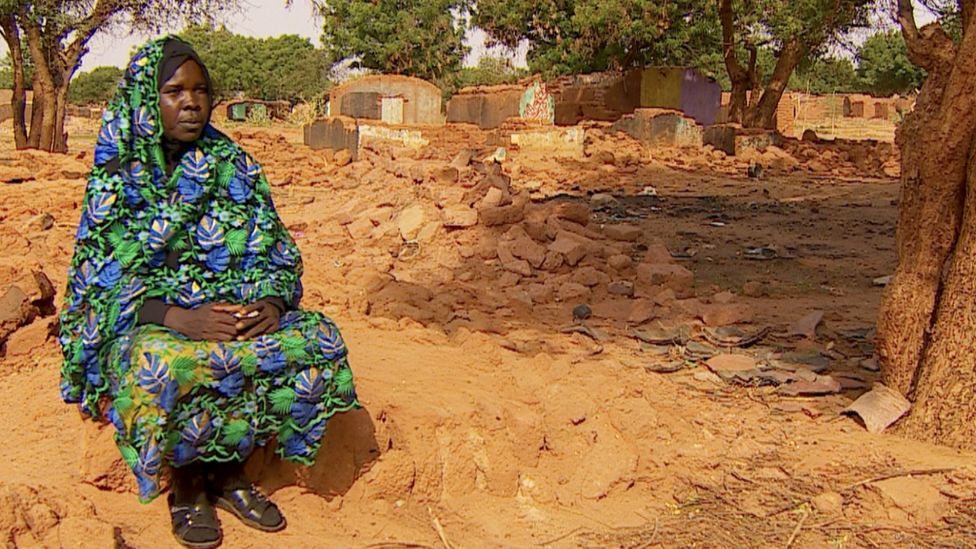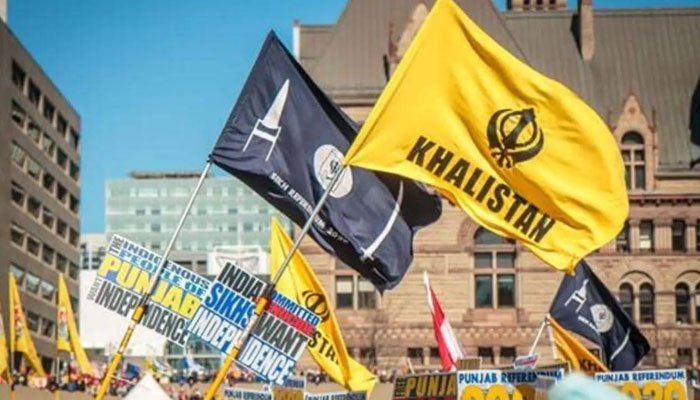
Darfur: Two years after the Sudanese revolution, hundreds of thousands of people have been internally displaced as violence in Darfur continues. Many hoped a hard-earned peace agreement would put an end to the decades-old conflict, but the region’s bloody legacy continues. Thirty-five-year-old Khamisa Juma Ishag Abaker is perched on a pile of rubble that was once her home.
Dressed in a floral print fabric that covers her from head to toe, she sifts through the dust to uncover an old bottle of perfume and dinnerware gifted to her but now broken – remnants of her old life. “My house had a garden and a door. I could lie down in the shade. I could cook for my children.”
It’s her first time returning to Krinding – a settlement for displaced people – after clashes in January left tens of thousands of people homeless and hundreds dead.
“They burnt all the houses. We tried to flee into the street, but they shot my brother. He fell and when he tried to stand up, they shot him again – they killed him in front of me. I’ve cried so much… my eyes can barely see now.”
Now living in cramped conditions in a school classroom in El Geneina, the capital of West Darfur state, she is struggling to take care of her ailing parents and her children.
“We don’t have money. We don’t even have beds, pillows, or blankets… I don’t have anything. I just stare and do nothing.”
Ms Abaker says the Rapid Support Forces [RSF], a paramilitary group tasked by the government with keeping civilians safe, is behind the attacks.
She is too afraid to go back.
“If the international forces came, we could return, but they won’t.”
The absence of joint UN-African Union (Unamid) peacekeepers is being felt by many in West Darfur. After 13 years on the ground, experts say their gradual withdrawal since December has been met with a surge of violence. Some 20,000 Sudanese troops were promised to take their place, but they are yet to arrive.
The war in Darfur began in 2003 after ethnic African rebels revolted against former President Omar al-Bashir’s Arab-dominated government.
Bashir responded by arming local Arab militias – infamously known as the Janjaweed – who targeted non-Arab tribes accused of supporting the rebels. Hundreds of thousands of people died and many villages were burnt and pillaged.
Then in 2019, he was ousted from government by some of his own generals following mass street protests calling for his removal. Now in prison in Sudan serving a sentence for corruption, Bashir is due to be transferred to the International Criminal Court (ICC) to face genocide and war crimes charges, which he denies.
A year after the revolution the new military-civilian transitional government signed a peace agreement with local rebel groups. Residents believed it was the beginning of a new era of calm, but unrelenting violence, which began in December 2019, has continued to grip the region.
As a result, more than 150,000 people have been displaced, according to data from the International Organization for Migration.
El Geneina is overflowing with people left twice displaced. Some 80 government sites host at least 50,000 civilians – all now experts in building makeshift homes assembled together from plastic sheets and sticks.
In April, fighting between one of Darfur’s biggest communities, the Masalit, and the Arabs spread to the centre, leaving people terrified of a future attack. BBC


